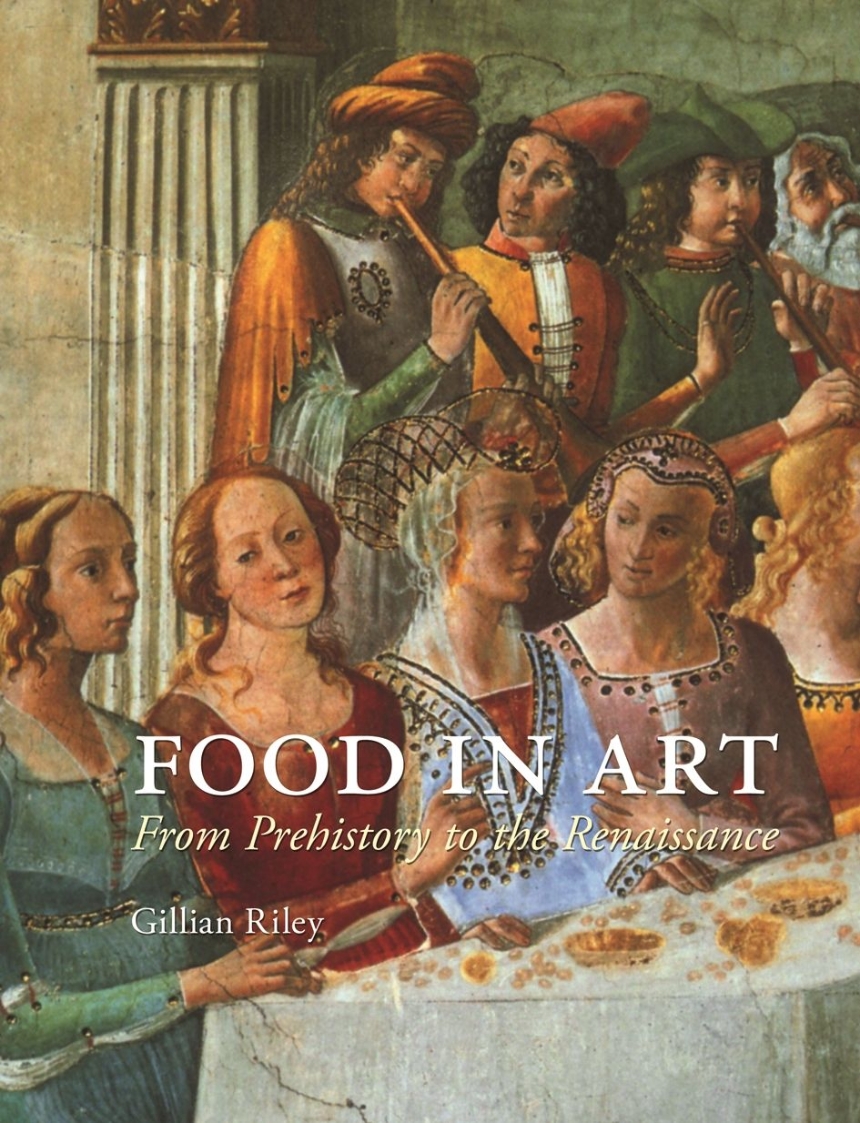From Giuseppe Arcimboldo’s painting of the Holy Roman Emperor Rudolf II as a heap of fruits and vegetables to artists depicting lavish banquets for wealthy patrons, food and art are remarkably intertwined. In this richly illustrated book, Gillian Riley provides fresh insight into how the relationship between humans and food has been portrayed in art from ancient times to the Renaissance.
Exploring a myriad of images including hunting scenes depicted in Egyptian Books of Hours and fruit in Roman wall paintings and mosaics, Riley argues that works of art present us with historical information about the preparation and preservation of food that written sources do not—for example, how meat, fish, cheese, and vegetables were dried, salted, and smoked, or how honey was used to conserve fruit. She also examines what these works reveal to us about how animals and plants were raised, cultivated, hunted, harvested, and traded throughout history. Looking at the many connections between food, myth, and religion, she surveys an array of artworks to answer questions such as whether the Golden Apples of the Hesperides were in fact apples or instead quinces or oranges. She also tries to understand whether our perception of fruit in Christian art is skewed by their symbolic meaning.
With 170 color images of fine art, illuminated manuscripts, mosaics, frescoes, stained glass, and funerary monuments, Food in Art is an aesthetically pleasing and highly readable book for art buffs and foodies alike.
Exploring a myriad of images including hunting scenes depicted in Egyptian Books of Hours and fruit in Roman wall paintings and mosaics, Riley argues that works of art present us with historical information about the preparation and preservation of food that written sources do not—for example, how meat, fish, cheese, and vegetables were dried, salted, and smoked, or how honey was used to conserve fruit. She also examines what these works reveal to us about how animals and plants were raised, cultivated, hunted, harvested, and traded throughout history. Looking at the many connections between food, myth, and religion, she surveys an array of artworks to answer questions such as whether the Golden Apples of the Hesperides were in fact apples or instead quinces or oranges. She also tries to understand whether our perception of fruit in Christian art is skewed by their symbolic meaning.
With 170 color images of fine art, illuminated manuscripts, mosaics, frescoes, stained glass, and funerary monuments, Food in Art is an aesthetically pleasing and highly readable book for art buffs and foodies alike.
Reviews
Table of Contents
Introduction
1. Glimpses of Food in the Paleolithic World
2. Eating in the Ancient Middle East: Mesopotamia
3. The Pleasures of Food in Ancient Greece
4. In Ancient Greece and Rome
5. Bright Feasts in the Dark Ages
6. The Middle Ages
7. Realism and Symbolism in the Renaissance Kitchen
8. Late Renaissance Modernity
Select Bibliography
Acknowledgements
Photo Acknowledgements
Index
1. Glimpses of Food in the Paleolithic World
2. Eating in the Ancient Middle East: Mesopotamia
3. The Pleasures of Food in Ancient Greece
4. In Ancient Greece and Rome
5. Bright Feasts in the Dark Ages
6. The Middle Ages
7. Realism and Symbolism in the Renaissance Kitchen
8. Late Renaissance Modernity
Select Bibliography
Acknowledgements
Photo Acknowledgements
Index

